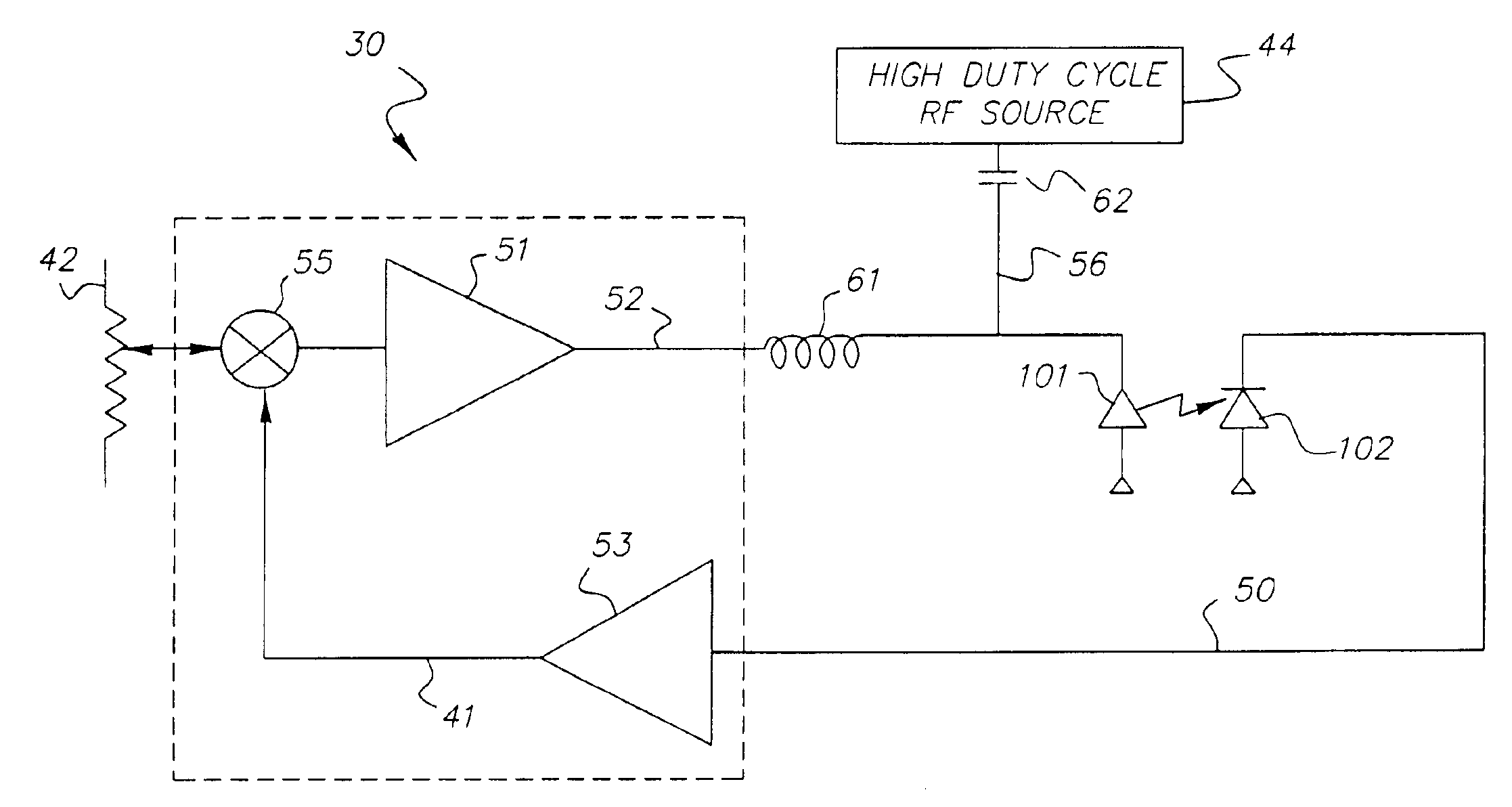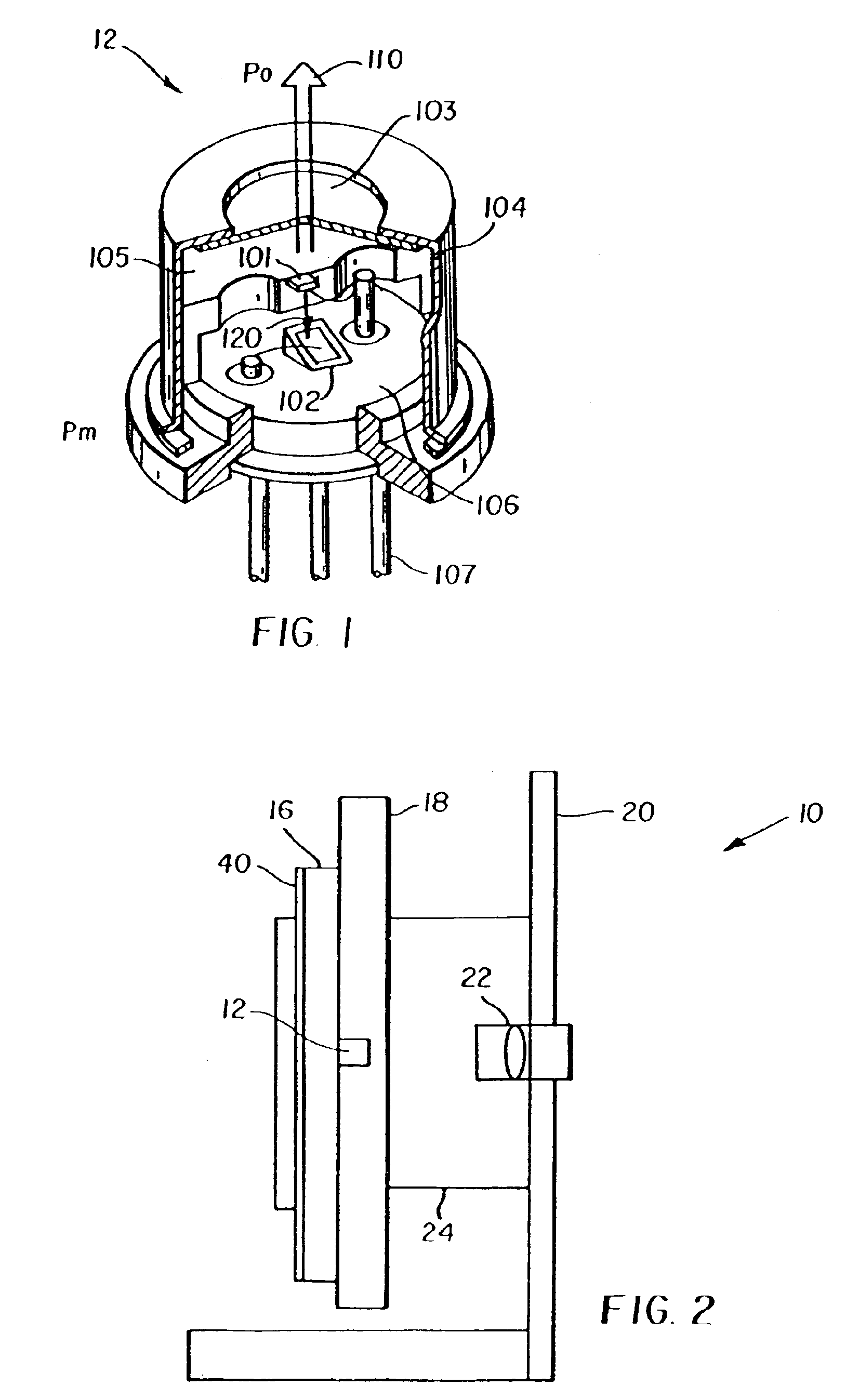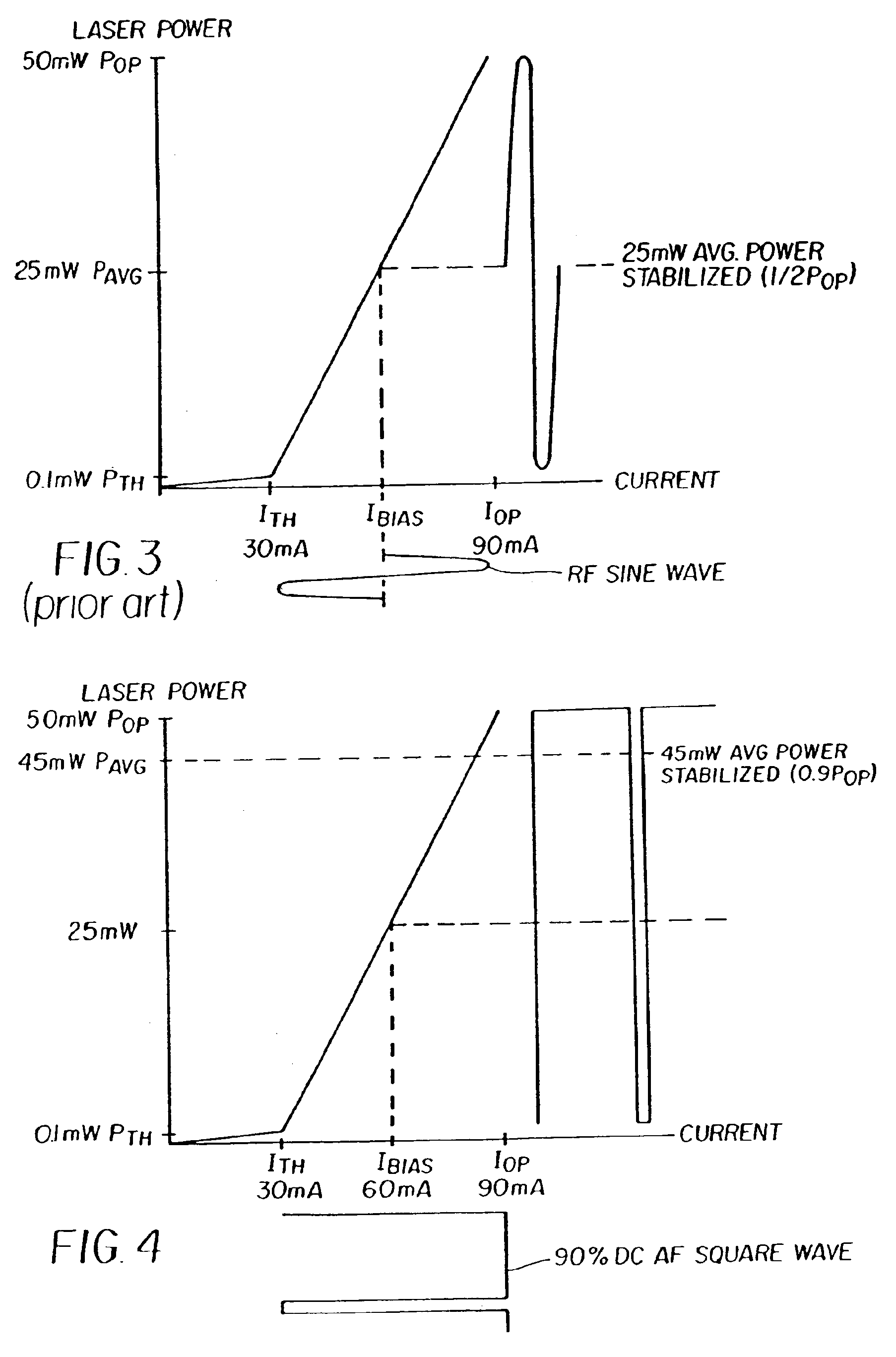System and method for improving laser power and stabilization using high duty cycle radio frequency injection
a radio frequency injection and laser power technology, applied in semiconductor lasers, optical radiation measurement, instruments, etc., can solve the problem of difficult to keep the laser from mode hopping for long periods of time, and achieve high duty cycle, high output power and stability, and high power
- Summary
- Abstract
- Description
- Claims
- Application Information
AI Technical Summary
Benefits of technology
Problems solved by technology
Method used
Image
Examples
Embodiment Construction
[0036]The present invention will be directed in particular to elements forming part of, or in cooperation more directly with, the apparatus in accordance with the present invention. It is understood that elements not specifically shown or described may take various forms well known to those skilled in the art.
[0037]FIG. 1 shows a semiconductor laser 12. Laser 12 is in a container defined by a cap 104 having an aperture 103 in a stem 106 and terminal 107. A semiconductor laser element 101 is mounted on a heatsink 105 with a light-emitting face on the side of aperture 103. A back facet photodiode 102 is fixed to stem 106 with a light receiving surface facing the semiconductor laser element 101. A laser beam 110 and a light power output (Po) is emitted from the semiconductor laser element 110 through aperture 103. At the same time, a monitor beam 120 with a light power output (Pm), at usually about 3% of Po, is emitted from the semiconductor laser element 101 toward the photodiode 102....
PUM
 Login to View More
Login to View More Abstract
Description
Claims
Application Information
 Login to View More
Login to View More - R&D
- Intellectual Property
- Life Sciences
- Materials
- Tech Scout
- Unparalleled Data Quality
- Higher Quality Content
- 60% Fewer Hallucinations
Browse by: Latest US Patents, China's latest patents, Technical Efficacy Thesaurus, Application Domain, Technology Topic, Popular Technical Reports.
© 2025 PatSnap. All rights reserved.Legal|Privacy policy|Modern Slavery Act Transparency Statement|Sitemap|About US| Contact US: help@patsnap.com



